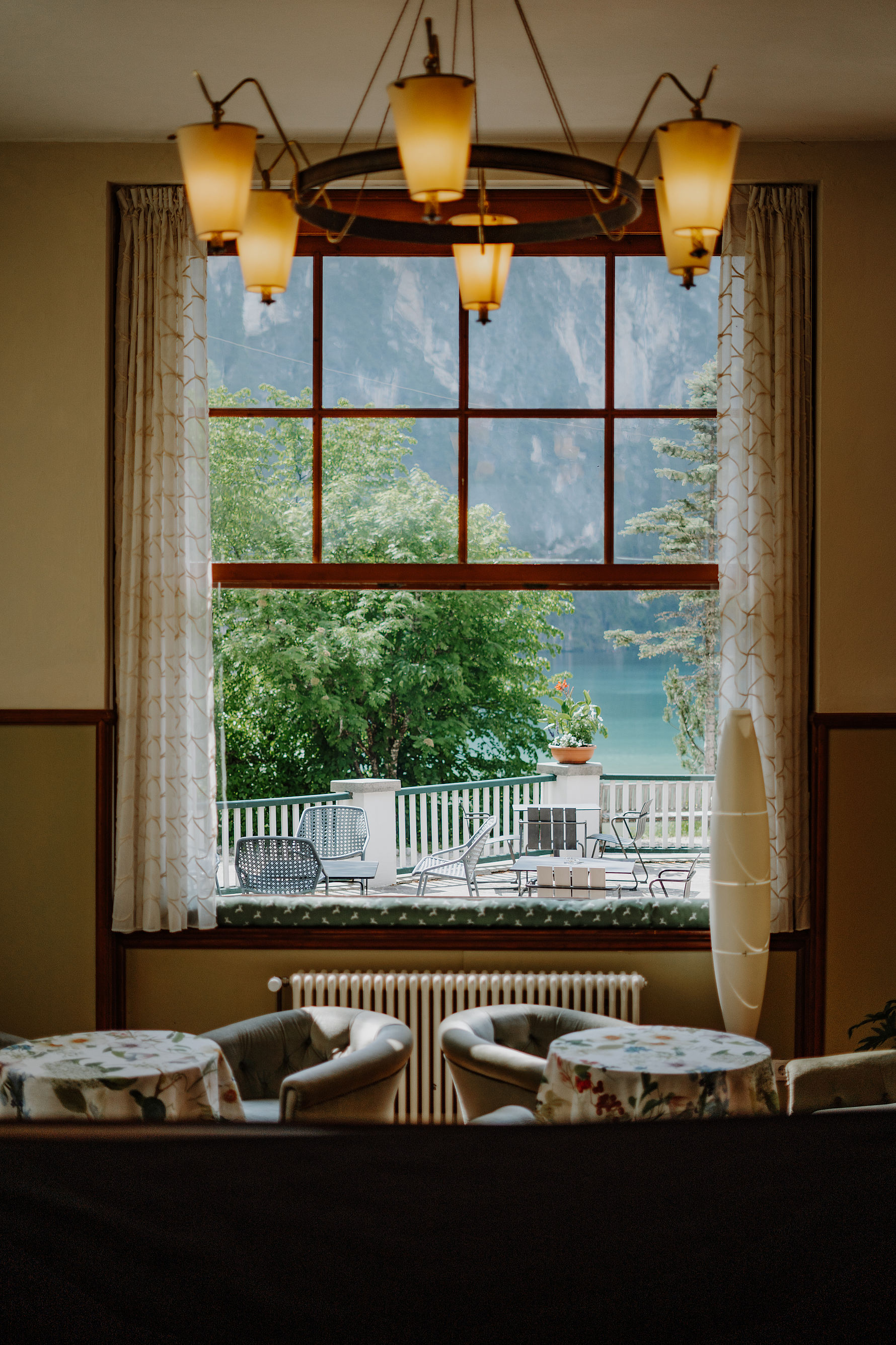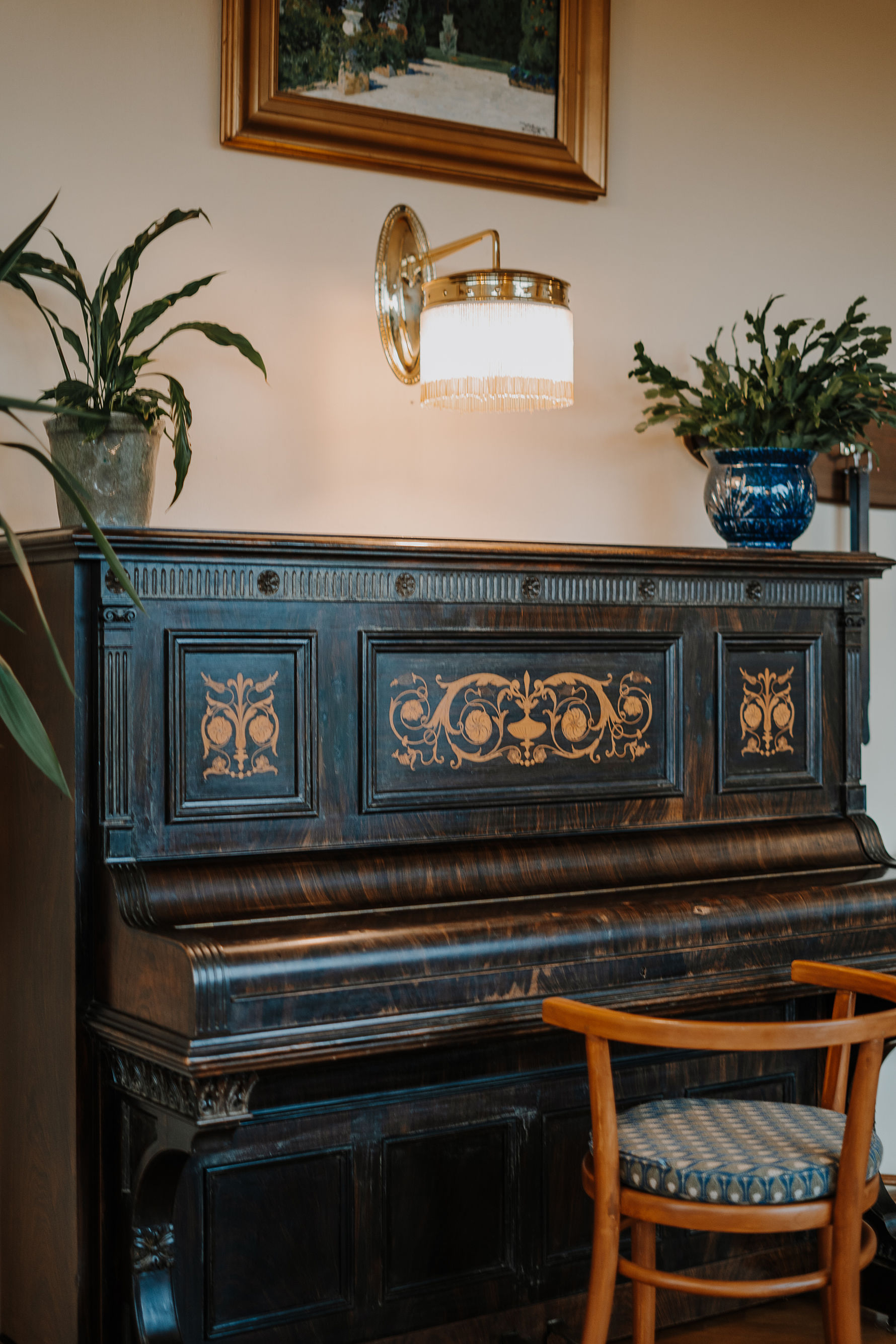Manuel Dellago of the Casa al Sole speaks about the courage it takes to change old habits, his commitment to the colour red and architectural scars, and why it is best to stay simple and consistent.

Historic: How did the Casa al Sole get its unique colour? Was red a conscious decision?

Manuel Dellago
Host of the Casa al Sole
No. In 2010, when we renewed the roof, we also had to redo the façade plaster. In the end, it was a gut decision. The red just happened. (Laughs.)
Our inspiration was a mansion in Naples, where they call this colour ‘rosso vesuviano’, Vesuvian red. Architecturally, this colour is a mistake, it doesn’t belong here. But at this point, we identify with it so much that we wouldn’t change it anymore.
You once said that ‘the material itself is the colour.’ What do you mean by that?
A good example would be the pure steel we used at several spots in the house. This material doesn’t need any colour. Or take the baths, which are sealed with a spackle of ground stone: This material has its own colour and feel, no paint required.
»The red just happened.«

Visible scars of reconstruction. Casa al Sole, Ortisei.
Many people here in Val Gardena speak Ladin, a rare Romance dialect. Is Ladin your native language, too?
Yes. I speak Ladin with my parents and siblings. I count in Ladin, I think in Ladin. Today, the language I speak most of the time is Italian because my wife grew up in Milan. And since we have a very international clientele, I almost always speak English with the guests.
You yourself are a widely travelled man.
When I was 20, I found this valley here much too small and much too boring. (Laughs.) After I finished hotel management school in Merano, I went out to see the world. I spent time in France, Germany, Switzerland, various places in Italy, and one year in New Zealand. And I worked in the catering trade in all those places.
What did you bring home from abroad?
Language skills, and people skills. Also some insight into the catering trades of different countries, in particular regarding wines, my great passion. But the most important thing I learned is that you don’t have to do what the guest might expect but rather what you prefer yourself. You don’t have to offer everything and fulfil every wish. It’s better to stay simple and consistent, in every way.
How do people feel about that?
I’m sure there are many interesting stories being told about us in the village. (Laughs.) Our bar, for example, is only open from 4 to 8 pm. It’s completely closed on Tuesdays, even during the main season. Outside those opening hours, guests can help themselves at our honesty bar. We make sure to set our priorities so as to attract the right guests, meaning those who want what we offer: guests who don’t care for alpine kitsch and souvenir landscapes.
»You don’t have to offer everything and fulfil every wish.«

Casa al Sole
The doors of this 1930s building right within the Dolomites are always open, bringing people and history together.
Tell us about the origins of your place!
The place was originally called Pensione al Sole. Building began in 1937, when the Fascists ruled and only Italian names were allowed. We changed it to Casa al Sole later. ‘Casa’ works because we want to be a second home. And it is well understood internationally.
Prior to 1937, the Pensione al Sole was next door. It was run by my great-grandmother Martha Insam, the daughter of a family of hoteliers from Santa Cristina. She worked hard, whereas my great-granddad Vinzenz Moroder was more talk than work¾at least that’s what I was told. (Laughs.)
In the 1960s, the building served as barracks for the carabinieri and later even as a refugee shelter. In short, this house always had guests¾from everywhere.
When did the Casa al Sole turn into the place it is today?
When I was 30, I came back to South Tyrol. I then lived and worked in Val Badia for 15 years. I had inherited the house in 2004 or 2005 but it took me a while to pluck up the courage to start my own project. We didn’t make concrete plans before 2015.
Who is ‘we’?
The architect Igor Comploi, my wife, and I. Igor Comploi is a native of this village, one year older than I am. When he came in here for the first time his first words were: ‘You don’t want to tear all this out!?’
And your response?
‘Of course not!’ (Laughs.) When we rebuilt in 2020, we tried to conserve as much as possible of the old building stock. All floors in the house are original, in the corridors as well as in the rooms. The windows are original as well, as are the inner doors, the outer doors, and the stairs. Even the room keys.
On the other hand, we emphasised the new elements. And we wanted to make the scars of reconstruction visible, with black spackle or black steel. For example, wherever we combined two rooms without a bathroom into one room with a bathroom by removing a wall, there is now a joint of pure steel on the floor.

»It’s better to stay simple and consistent in every way.«



Does your nostalgia affect the place as well?
Maybe. But a lot of it is coincidence, too. Our cushions, for example, are from Slovakia, where my wife Alexandra is from. They are from the 1930s, just like the house. The design is by Jindřich Halabala.
Unfortunately, only a few pieces remained of the original furniture, including the chairs in the breakfast room. We only repainted them. They are almost 90 years old, but they neither creak nor wobble, so they’re perfect.
The Dolomites have been a UNESCO World Heritage Site since 2009. How does this affect your region and your business?
There are international guests who want to see everything: Lago di Carezza, Tre Crime di Lavaredo, Lago di Braies. We recommend them to not do that but to stay here and explore the mountains starting from our place on foot or in the cable cars. To feel the magic of the Dolomites, one should really stay in one place a bit longer.


Casa al Sole
Via Scurcià 2
39046 Ortisei/Val Gardena, South Tyrol
+39 0471 796 437
www.casa-alsole.it

![[Translate to english:] Historic South Tyrol, Casa al Sole](/fileadmin/_processed_/4/b/csm_historic_southtyrol_casa_al_sole-40_7533929933.jpg)













